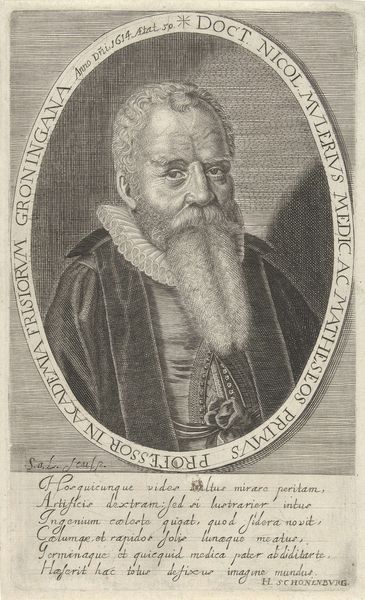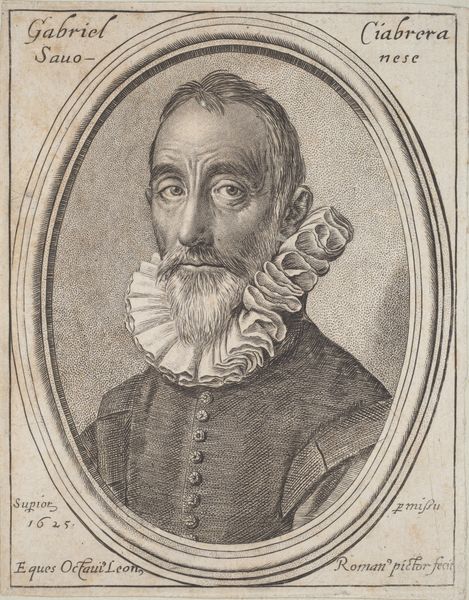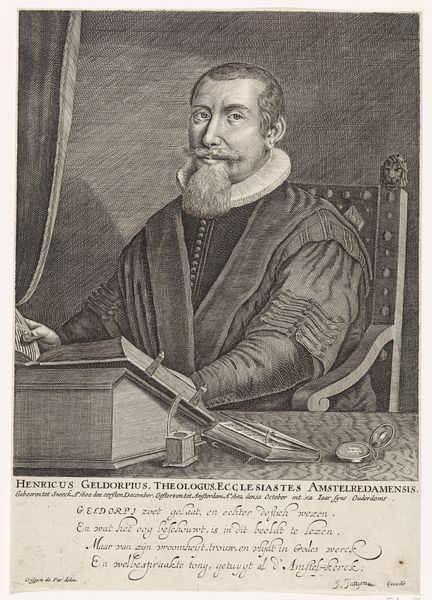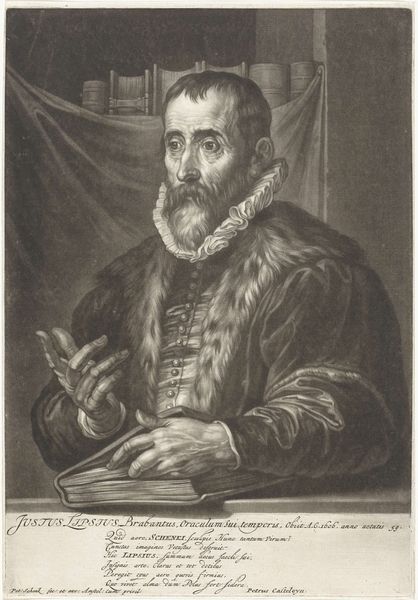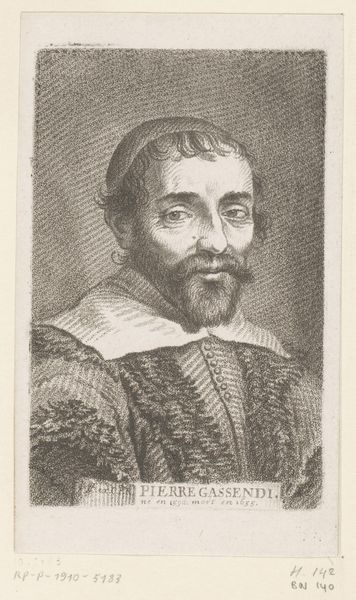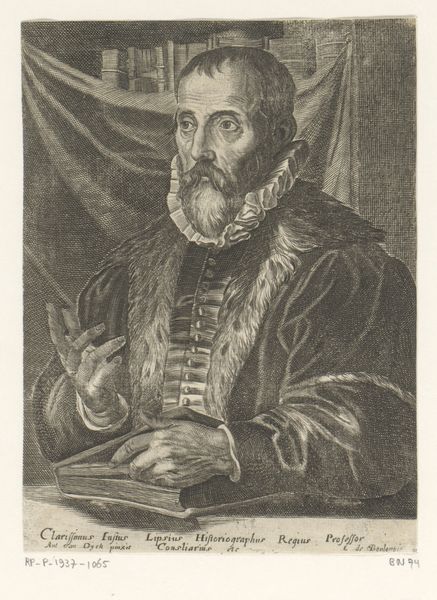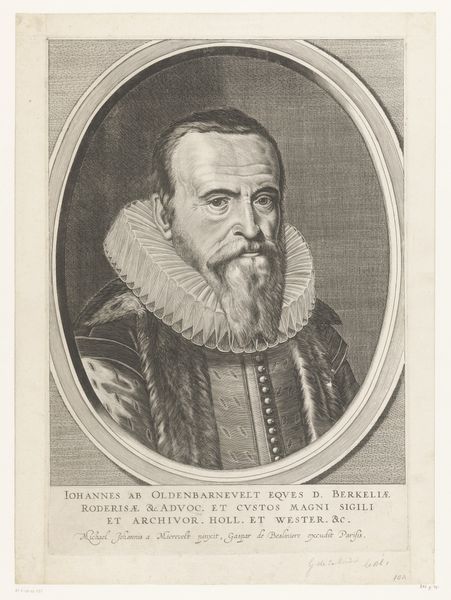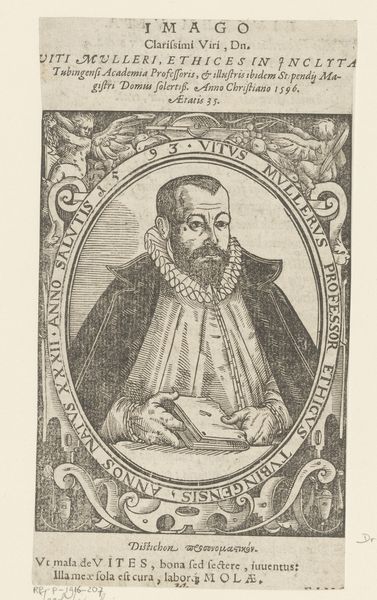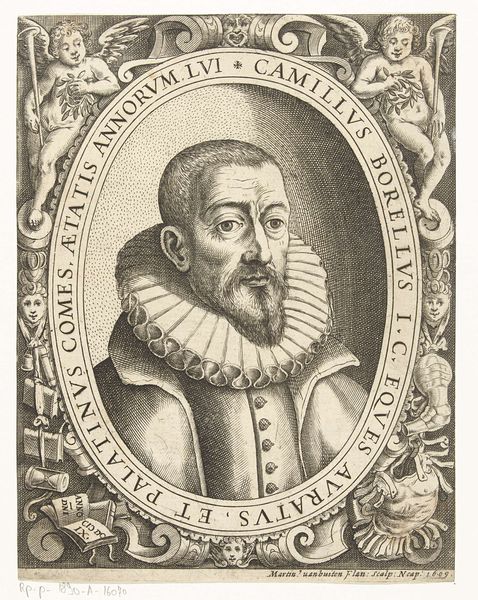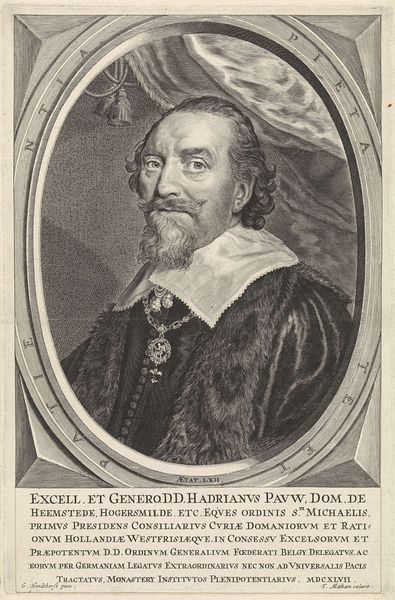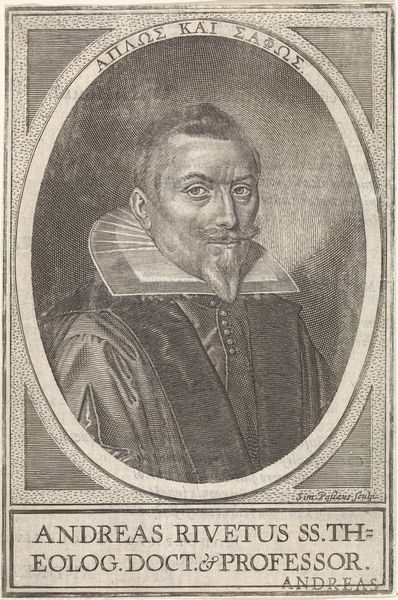
print, engraving
#
portrait
#
baroque
# print
#
caricature
#
history-painting
#
engraving
#
portrait art
Dimensions: plate: 25 x 19 cm (9 13/16 x 7 1/2 in.) sheet: 34.5 x 25.6 cm (13 9/16 x 10 1/16 in.)
Copyright: National Gallery of Art: CC0 1.0
Curator: This is Michel Lasne’s print, "Mathieu Mole." A baroque portrait. There's a striking formality to it, even sternness, conveyed through the tight composition and the sitter’s direct gaze. Editor: Absolutely. My first impression is that it possesses a sort of calculated seriousness. It’s interesting how the artist uses such detailed lines to suggest textures, the beard for instance or the folds in his robe. One has to wonder if this aesthetic has something to do with conveying social power dynamics... Curator: Precisely. Looking into the history here, we see this engraving offered the public a clear representation of a powerful man. Mathieu Mole was a key political figure in France, serving in significant legal and administrative roles. Lasne here uses the visual language of the era to both portray and underscore his subject's authority. Editor: Note the presence of the family crest; how important was it to visibly tie Mathieu to ideas about genealogy and power! In some ways it visually links a lineage to notions of historical determinism, an unspoken acceptance about hierarchies in a world believed to have divinely preordained roles. I wonder, do we have any record of how this piece was received by contemporary audiences? Curator: Prints like these would have circulated widely, helping to build and reinforce Mole's public image. They're key artifacts when trying to consider not only individual status but also the prevailing cultural and social ideologies of the time. Consider also the strategic presentation—the imposing robes, the distinguished beard, each element meticulously rendered to project an image of unwavering control and knowledge. Editor: And thinking about audiences in the present, Lasne's rendering pushes me to think about portraiture within art through an engagement with broader narratives centered on class and its intersectional effects on how images impact notions of power, beauty, and perhaps more urgently visibility. The historical record matters. Curator: Indeed, in studying "Mathieu Mole," we uncover layers about 17th century French society and portraiture's critical role in upholding it. Editor: I agree, a valuable case study on imagery as an exercise in social control, that continues to be worthy of examination today.
Comments
No comments
Be the first to comment and join the conversation on the ultimate creative platform.
